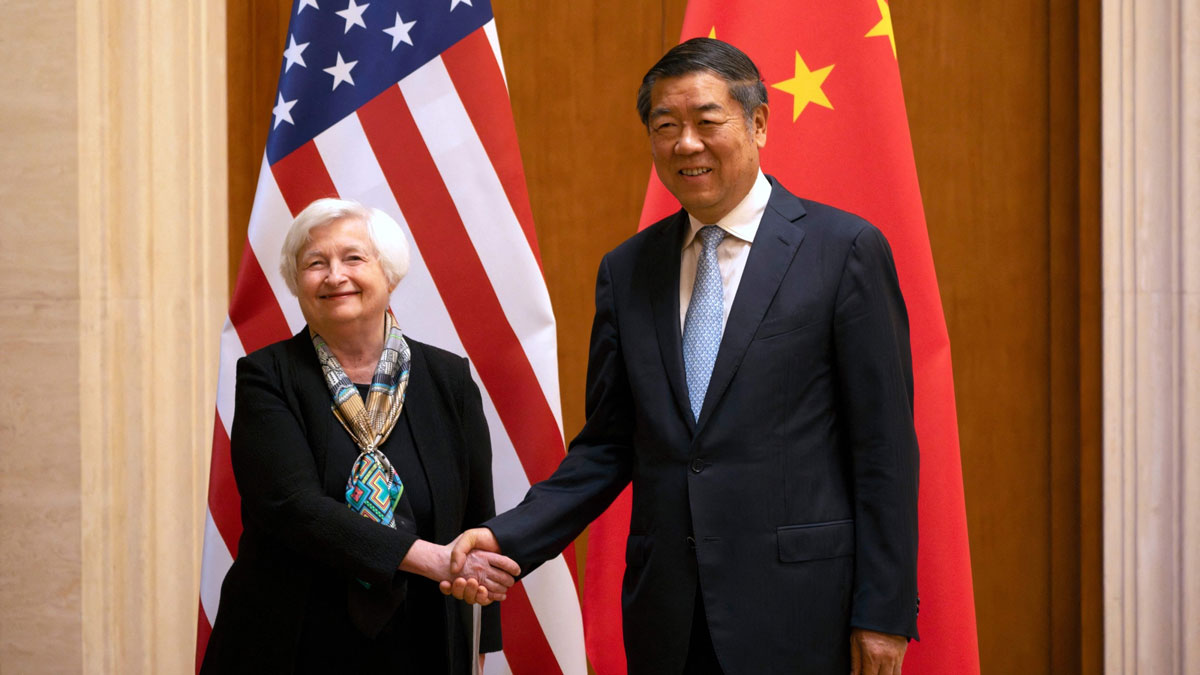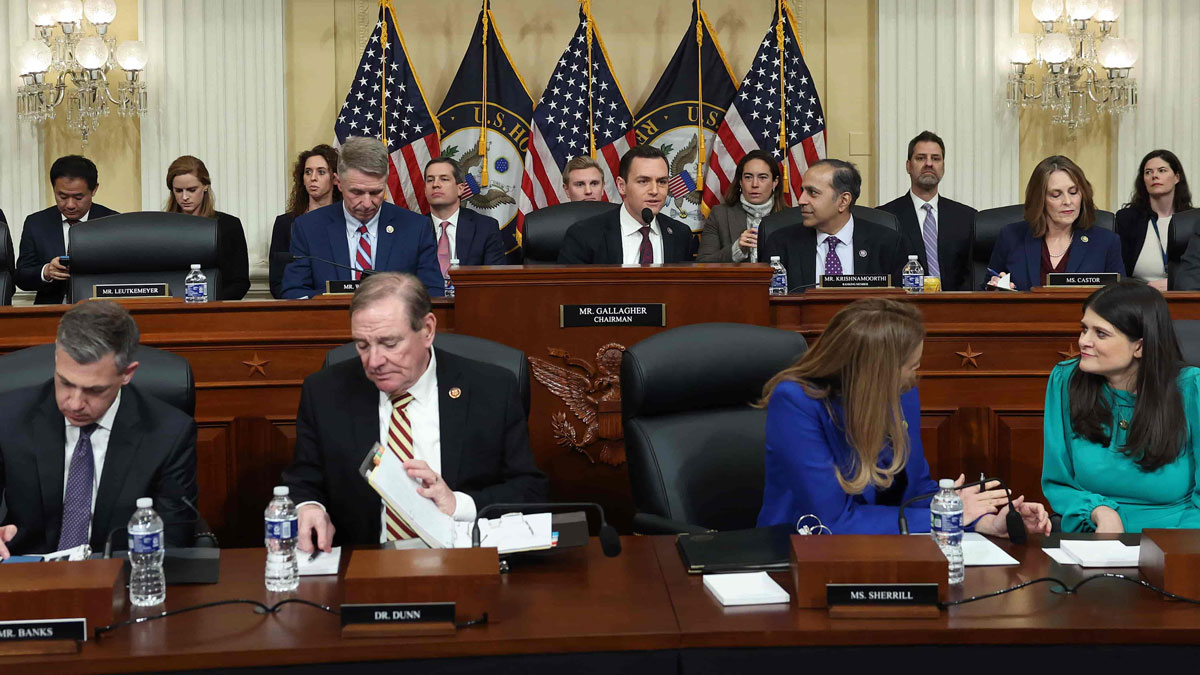Published 09 April 2024
Yellen's second visit to China in less than a year highlights the importance of an open channel for high-level communication on economic and financial issues between the two countries, though the messaging from the visit suggests that favorable outcomes are unlikely.
US Treasury Secretary Janet Yellen’s embarked on a week-long visit to Guangzhou and Beijing over the weekend, days after Chinese President Xi Jinping and his US counterpart Joe Biden spoke by phone on a range of bilateral issues.
The US and China launched economic and financial working groups (overseen by Yellen and her Chinese counterpart vice-premier He Lifeng) in September 2023, shortly after Yellen's first visit as Treasury Secretary to Beijing last July. Three meetings have been held for each of the working group, the most recent being the third meeting of the Economic Working Group (EWG) held on February 5-6 this year in China.
The dialogue under Yellen’s remit has predominantly centered on key economic issues facing each country and their respective policy responses. They have not resulted in any shifts in either the US or China’s policy stance regarding investment and export restrictions. The Biden administration has also maintained Trump-era tariffs. Yellen’s remarks prior to her trip raised the possibility of the US imposing more tariffs and other trade barriers to counter China’s industrial overcapacity that Washington views as impacting American firms in sectors like solar cells, batteries, and electric vehicles.1 Despite polarizing views on a range of economic and security issues, both governments have attempted to stabilize relations by increasing communications between high-level officials.
Will Yellen’s visit to China offer some breathing space for investors and businesses as the US marches on to its presidential election this year?
Here’s our key takeaways from Yellen’s visit:
1. Yellen tried to build on a fragile bilateral consensus
Yellen’s visit occurred against a backdrop of escalating tensions from strategic competition between the US and China, as well as economic challenges faced by both superpowers, including China’s property market downturn and US’ mounting federal debt. Yellen’s second visit to China in nine months underscores the White House placing fresh priority on maintaining high-level communication on bilateral issues between the two nations. Yellen met with several China’s high ranking officials including Vice Premier He Lifeng, Premier Li Qiang, former Vice Premier Liu He, Beijing Mayor Yin Yong, and People’s Bank of China (PBOC) Governor Pan Gongsheng.
During her visit, Yellen pressed the Vice Premier on unfair trade practices that fuel industrial overcapacity and discussed the expansion of cooperation on countering illicit financing that contributes to drug trafficking and fraud. Her discussions included collaborating on efforts to strengthen financial stability, address climate change, and tackle debt distress in developing nations. These priorities align with what little consensus that emerged from Biden and Xi’s phone call – advancing consultation mechanisms in economy and finance, as well as engaging in dialogue and cooperation in areas such as drug control and climate change.
2. Yellen’s image in China works better for dialogue
While Yellen spoke of issuing warnings on China’s industrial overcapacity before her trip, industrial policies primarily falls under the purview of the US Department of Commerce rather than Treasury. Considering Commerce Secretary Gina Raimondo’s recent declaration that the US will "will do whatever it takes" to curb China’s access to advance tech and revision of regulations to toughen export restrictions on high-performance semiconductors, advanced semiconductor-making machines, and supercomputers to Chinese firms, it appears that Yellen, who is by far perceived more favorably by Beijing, is viewed by the White House as a more suitable emissary to engage China in efforts to maintain more constructive dialogue to bridge differences in US-China relations.
The signals toward rapprochement continued apace in Washington even as Yellen landed in China. China’s Vice Commerce Minister Wang Shouwen, also Beijing’s international trade representative, visited the US from April 2-5 at the invitation of the US, where he co-chaired the first vice-ministerial meeting of the China-US commercial and trade working group with US Under Secretary of Commerce for International Trade Marisa Lago. The Chinese side raised issues with US Section 301 tariffs on China, national security, and alleged unfair treatment of Chinese companies. But the commerce officials on both countries agreed to jointly support trade and investment promotion activities, cooperate on clean energy technology, and strengthen communication and exchanges under the export control information exchange mechanism.2
Reiterated as a top priority during her trip, Yellen expressed growing international concerns about overcapacity in certain Chinese industries in her meeting with He Lifeng and Li Qiang and reaffirmed the need to deepen communications to foster a healthy economic relationship.
Although Yellen emphasized that the US does not seek to “decouple” from China in her conversation with Li, there were no significant breakthroughs achieved on economic policy in terms of potentially alleviating trade and investment restrictions that have burdened businesses in contended sectors.
3. New talks on macroeconomic imbalances and cooperation on anti-money laundering
Yellen and He announced two new initiatives to strengthen technical exchanges:3
Exchange on Balanced Growth in the Domestic and Global Economies: Finance officials on both sides would engage in discussions on issues such as domestic demand, investment policies, aging populations, fiscal issues, and related policies under the EWG’s framework.
Joint Treasury-PBOC Cooperation and Exchange on Anti-Money Laundering: Collaboration under the framework of the Financial Working Group (FWG) to combat money laundering will focus on best practices and mutual updates to tackle criminal organizations, including drug traffickers, human traffickers, and fraud.
US and China also agreed to continue a series of financial technical exchanges such as on operational resilience in the financial sector and on financial stability implications from the insurance sector’s exposure to climate risks.
The initiatives reflect an expansion of issues and deepening of cooperation under the existing economic and financial working groups.
During a press conference concluding her trip, Yellen emphasized that the hollowing out of industrial production and significant job losses are “unacceptable” for the United States. She also stressed the necessity of having more conversations between US and China on the definition of national security as well as the importance of greater transparency in China’s actions and measures.
As anticipated by most observers, Yellen’s visit did not yield significant outcomes but has signaled a resumption of communications aimed at avoiding an unforeseen escalation of economic conflict with China amid increasing trade tensions ahead of a difficult election campaign for Biden.
Still, the inherent challenges of the high costs of US manufacturing relative to China, and the nature of geostrategic competition between both countries, are likely here to stay. The economic rivalry is continuing to play out in technologically advanced industrial sectors, and is likely to prompt further tit-for-tat measures: From China’s imposition of guidelines that bar the use of US processors produced by Advanced Micro Devices Inc. and Intel Corp. in Chinese government computers and servers to the US move to push allies to stop their top chipmaking equipment firms from servicing equipment exported to China, the list is likely to go on.
An upcoming visit by US Secretary of State Antony Blinken is expected by the end of the month to engage with China on one of the thorniest issues affecting US-China bilateral ties: South China Sea tensions and Taiwan. Stay tuned.
***
[1] https://www.bloomberg.com/news/articles/2024-04-03/yellen-says-us-has-option-to-shield-new-industries-against-china
[2] http://www.mofcom.gov.cn/article/xwfb/xwbldhd/202404/20240403488595.shtml
[3] https://home.treasury.gov/news/press-releases/jy2231
© The Hinrich Foundation. See our website Terms and conditions for our copyright and reprint policy. All statements of fact and the views, conclusions and recommendations expressed in this publication are the sole responsibility of the author(s).







